Innovation Strategy
Are you looking for a way to innovate and grow your business?
As an innovation strategist, I help companies uncover new opportunities, innovate creative solutions, and drive growth. With my experience and expertise, I can empower you to craft an effective innovation strategy that unleashes the full potential of creativity and takes your business to the next level!
Contact me today to discover more about my innovation strategy services and how we can work together to help you achieve your goals!
I look forward to hearing from you!
Dan is an executive technology leader passionate about making a lasting positive difference and maximising shareholder value.
Dan’s extensive background in operations, technology, and leadership across global financial brands is leveraged to drive growth and efficiency through innovative strategies. His 30+ years of experience show a proven track record of success.
Introducing you to a world of limitless possibilities!
I am a seasoned innovation strategist passionate about helping companies thrive in today’s fast-paced world. My team and I offer various innovative services to help organisations stay ahead of the curve and drive competitive advantage.
Here’s a sneak peek at some of the top-tier services we offer:
At our core, we specialise in crafting a tailor-made innovation strategy to fit your organisation’s unique goals, capabilities, and culture.
Instead of taking a one-size-fits-all approach, we work closely with you to evaluate your current innovation efforts, point out areas for improvement, and chart a course for success. Our data-driven, collaborative innovation system guarantees that your innovation strategy is realistic and practical, focusing on tangible results. Let us help you revolutionise the way you innovate!
We excel in helping you create and fine-tune fresh concepts that hold immense potential to add value, resolve troubles, or shake up markets.
We bring you a plethora of brainstorming, design thinking & customer insights techniques and tools to hold engaging and productive ideation sessions. Evaluating and prioritising your best ideas comes effortlessly, enabling us to help develop concepts that are irresistible to your audience and achievable to you.
Innovation Culture and Capability Building
We wholeheartedly believe that revolutionary innovation is more than just great ideas; it’s about the incredible teamwork and perseverance that brings them to life!
We strive to help organisations create a culture where creativity and new ways are nurtured, experimentation is encouraged, and risk is embraced. Innovation isn’t a one-time event but a continuous process.
An organisation’s root cause of difficulties can often be traced back to its top leadership. Poor communication from senior managers can render even the most well-crafted innovation strategies ineffective if implemented improperly. That’s why we offer training, coaching, and mentoring to help build the core capabilities needed to execute an innovation strategy effectively and sustainably.
We focus on upskilling organisations in critical areas like prototyping, testing, scaling, and commercialising to help turn great ideas into reality. Innovation strategy work is a journey, and we’re here to help guide you every step of the way.
Innovation Program and Project Management
We specialise in aiding businesses with the successful execution of innovation initiatives, from conceptualisation to implementation.
Our team assists in crafting innovation programs that are tailored to match your company’s objectives, resources, and innovation strategy. In addition, we work alongside you to ensure hassle-free innovation project management, even with multiple stakeholders, functions, and disciplines involved. Our innovation program and project management approach are dynamic, responsive, and outcome-focused.
We aim to bring about tangible results and positive changes for your core business through our innovative practices.
Innovation Metrics and Evaluation
We assist organisations in appraising their innovation success and impact by defining and monitoring meaningful and action-oriented metrics.
Our innovative approach aims to create a culture of continuous improvement through various evaluation methods, including surveys, interviews, case studies and more. By learning from past wisdom, we strive to enhance innovation capabilities, ultimately achieving measurable returns on investment.
We’re passionate about innovation strategy and excited to unleash the creative potential of your organisation. Our top-notch services offer a custom roadmap to success that suits your unique needs and goals.
Please feel free to contact us today to learn more and schedule a complimentary discovery session. Let’s unleash your innovation potential together!
Your Ultimate Guide to Innovation Strategy
Ready to begin your innovation journey?
Below are some fantastic resources that will inspire and guide you!
2. 5 Reasons why having an innovation strategy is Important
3. What is the secret to an excellent company innovation strategy?
4. How an innovation strategist works
5. 7 Steps involved in developing an innovation strategy
6. Problem solving & innovation
7. Types of innovation strategies
What is an Innovation Strategy?
Innovation is the lifeblood of any successful organisation, and a carefully crafted innovation strategy is the key to developing and monetising new ideas.
A reliable innovation strategy provides a plan for generating novel products, services, and processes and ensures that innovation aligns with the company’s core values and goals. A well-designed innovation strategy allows a business to take calculated risks and reap the rewards of new ventures while minimising the downsides.
With a clear innovation strategy, the possibilities are endless.
Key elements of a successful innovation strategy:
Innovation Objectives:
As an organisation, setting business objectives and targets for radical innovation is crucial to achieving success.
Innovation objectives can be related to different areas, such as revenue growth, market share, customer satisfaction, operational efficiency, or sustainability.
Innovation Focus Areas:
These are the areas or domains where the organisation wants to innovate.
Innovation focus areas can be related to different aspects such as technology, customer needs, regulatory compliance, or competitive differentiation.
Innovation Drivers:
The forces that push an organisation to develop new and better ideas are known as innovation drivers.
These can include adjusting to new market trends, listening to feedback, encouraging employee creativity, embracing technological advances, or responding to regulatory changes. By tapping into these various influences, an organisation can find inspiration to create the next big thing and stay ahead of the curve.
Innovation Approach:
Bringing new ideas to the market is a complex and multi-step journey.
From those first sparks of inspiration to final commercialisation, companies must navigate various tools and techniques to realise their dreams. This journey can include everything from brainstorming sessions and concept development to prototyping, testing, and validation, ensuring that every idea is fully realised before it hits the market.
With a well-developed approach, organisations can turn even the wildest ideas into tangible products and services that help drive growth and success.
Innovation Resources:
An array of resources is needed to drive radical innovation within an organisation.
These resources come in many shapes and sizes – from the skills of R&D teams and new technology to the funds provided by venture capitalists. It is vital to ensure that diverse internal and external sources, such as innovation labs and strategic partnerships, are readily available to support any creative endeavours.
The right combination of people, knowledge, and funding must be prioritised within innovation initiatives to stay ahead of the industry curve.
An innovation strategy is essential for your company to achieve its overall business objectives whilst remaining competitive and maximising value in the ever-evolving business landscape.
You can stay one step ahead of customer needs and expectations by harnessing your strengths, capitalising on opportunities, and developing forward-thinking solutions! 😀

Advanced Decision Intelligence
What is advanced decision intelligence, and why do you need it?
Learn everything you need to know about this new trending tool and how to use it to make better decisions for your business.
5 Reasons Why Having an Innovation Strategy is Important
A well-defined innovation strategy is important for businesses for several reasons:
1 – Competitive Advantage:
Innovate or fall behind.
That’s the message businesses need to internalise to thrive in today’s cutthroat business environment. A solid innovation strategy can be a game-changer when setting your brand apart. Creative, inventive solutions can translate into new revenue streams, higher profit margins, and a devoted consumer base.
By embracing disruptive innovation, businesses can capture a significant market share and establish themselves as leaders in their respective industries.
2 – Growth and Expansion:
Innovation isn’t just about creating cool gadgets and flashy apps; it’s also a driving force for business growth and expansion.
Companies can boost their profitability and longevity by exploring new markets and revenue streams. To achieve this success, businesses need a solid innovation strategy in place—one that identifies growth possibilities and equips them with the skills and resources to seize them.
After all, in today’s fast-paced world, staying ahead of the curve is critical to staying in the game.
3 – Risk Management:
Innovation can be a double-edged sword, requiring a savvy strategy to wield it successfully.
With the right approach, businesses can identify and curb the risks of breaking new ground. Careful analysis of the market, potential customers, tech trends, and rivals can highlight where those risks lurk and how to tame them.
This way, businesses can leapfrog their competition while minimising their exposure to harmful surprises.
4 – Employee Engagement:
Encouraging radical innovation within a workplace can inspire and motivate employees by creating a dynamic environment that stimulates creativity, bolsters collaboration and cultivates the thirst for learning in all staff.
A company that embraces a culture of innovation becomes a potent incubator of ideas, where every member of staff feels empowered to contribute towards the growth and success of the organisation.
Clear communication of goals, objectives and expectations through a well-defined innovation strategy sets the stage for every employee to offer unique ideas and insights to create a forward-thinking business that always leaps ahead.
5 – Customer Satisfaction:
Innovation can also improve satisfaction.
To build lasting loyalty and respect, businesses must evolve with the changing needs and want of their clients. By adopting an innovation strategy, companies can better understand the desires of their consumers and develop products and services that truly resonate with them.
This ultimately leads to a valuable and meaningful relationship between businesses and their clients, leading to tremendous success for all parties involved.
A forward-thinking and carefully crafted innovation strategy can be the secret ingredient that keeps businesses ahead of the curve, even in constant change.
This approach empowers businesses to spot and seize vital opportunities while effectively navigating risk, all while keeping employees energised and consumers satisfied. With the right innovation strategy, companies can achieve their objectives and emerge more robust and successful, no matter what the future holds.
Recommended reading – Harvard Business Review; “You Need an Innovation Strategy” by Gary P. Pisano

What is the secret to an excellent company innovation strategy?
There is no one “secret” to an excellent company innovation strategy, as the best approach will vary depending on the organisation’s specific goals, industry, and resources.
However, some key elements that are commonly found in a successful innovation strategy include:
- Clear vision and goals
- Alignment with business strategy
- Cross-functional collaboration
- Embrace experimentation
- Continuous improvement
- Encourage Risk-taking
- Strong leadership
How an Innovation Strategist Works
Unlocking the potential of an idea and bringing it to life can be a daunting task for any business, so knowing the best approach is a vital tool in your arsenal.
Following carefully crafted steps, you can take your concept from a mere thought to a tangible new product, service, or process that can benefit your company and clients. From ideation to execution, innovation development involves numerous stages that can be adapted to fit the needs of your business and the complexity of your innovation.
Overview of Innovation Development
Idea Generation
Innovation development begins with the exciting idea generation stage, where creativity is unleashed from many sources.
These sources can range from employees to competitors, all to generate a robust selection of ideas. The aim is not only to solve issues but also to meet business needs and uncover unexpected opportunities. The result is a diverse pool of ideas that could foster new avenues of growth and success.
Idea Screening
Innovation is a process that involves some severe idea screening.
This means evaluating all the ideas from the previous stage against a set of criteria, like whether they’re viable, desirable, or aligned with the business strategy. This is where the rubber meets the road – it’s all about filtering out anything that doesn’t fit the bill. By doing so, we’re ensuring that only the best and brightest ideas are cut.
So, let’s put on our thinking caps and get to work!
Concept Development
Innovation isn’t just about having great ideas but also about converting them into something tangible.
That’s where concept development comes in. During this critical third stage, ideas are carefully honed and refined until they reach a new level of detail and specificity. This helps ensure that everyone involved is on the same page regarding the innovation’s value proposition, target market, benefits, features, and design.
So if you’re looking to transform your great idea into a game-changing innovation, concept development is a crucial step to get right.
Feasibility Analysis
Feasibility analysis is all about figuring out whether your idea is doable.
This involves looking at the tech, the finances, and the existing organisational structure to see if they can support your concept. If there are any potential obstacles, the goal is to identify them early so you can find creative solutions and keep moving forward.
Prototype Development
Innovation takes on a tangible form in the fifth phase of the process: prototype development.
Whether it’s a physical or virtual prototype, the aim is to put the concept to the test, hammer out its functionality, and hone its performance. The stakes are high because getting feedback from users and stakeholders and fine-tuning the new product can mean the difference between success and obscurity. This stage is all about listening closely, asking the right questions, and striving to identify any areas for improvement.
Testing and Validation
Moving beyond theory to real-world application, things get exciting at the sixth stage.
Testing and validation mark the crucial moment when a prototype must prove its mettle in the face of real-world conditions. Assessing its effectiveness, reliability, and safety is vital, as the innovation must satisfy the needs of its target market and comply with regulatory standards.
This stage provides an opportunity to truly put groundbreaking ideas to the test and ensure their success.
Launch and Commercialisation
The last part is like the grand finale of a fireworks display – it’s time to light up the sky and wow the crowd.
In the launch and commercialisation stage, the innovation spreads its wings and enters the market. With some help from advertising, sales, and social media, the creation is presented to the world and eager clients. Here’s where the rubber meets the road – the bottom line is profit and sustainability for the business model.
So let’s light that fuse and watch it soar!
Innovation is a captivating journey of discovery, learning, and adaptation.
Along the way, various pioneers and experts come together, bringing their unique expertise and perspectives. A strategic and systematic method is crucial in staying focused, providing a blueprint for companies to follow, and bringing success within reach. With continuous experimentation and an open mind, organisations stand to create a customer-centric innovation strategy that unlocks the potential for growth and prosperity.
7 Steps Involved in Developing an Innovation Strategy
Thriving in today’s dynamic marketplace demands organisations to have a solid innovation strategy. This vital process involves several crucial steps that must be taken to stay on-trend and relevant.
Listed below is an all-encompassing guide to what it takes to develop an effective innovation strategy:
Define the Business Strategy
The first step for any organisation is to lay the foundations by defining a solid business strategy to kickstart radical innovation.
This entails delving deep into the company’s overarching goals and objectives and pinpointing the core elements that drive value and growth. Once these are clear, an innovation strategy that harmonises with and fortifies the business strategy can be crafted, paving the way for realising long-term aspirations.
Conduct Market and Customer Analysis
Crafting a successful innovation strategy takes more than just a stroke of genius.
The second step involves peering into the market’s inner workings and customer mindset. By gathering intel on trends, new technologies, competition, and what most people want, businesses can spot gaps and opportunities ripe for innovation.
The ultimate objective? Creating more value for both the company and its faithful customers.
Identify Innovation Objectives and Targets
To drive innovation in your business, it’s important to establish objectives and targets that are specific, measurable, and closely aligned with your overall strategic goals.
This might involve identifying areas where you can create new products or services that meet your potential customers’ needs or looking for ways to streamline your operations and improve your overall efficiency. With a clear sense of your innovation goals and priorities, you’ll be well-positioned to create a culture of experimentation and creativity that drives long-term success.
Determine Innovation Capabilities and Resources
Determining your capabilities and resources is vital as you craft an innovation strategy.
This involves deep diving into your business’s knowledge and resources and identifying existing skills areas where improvement is needed. You can do that to build the foundation to achieve your innovation objectives. Remember to consider the importance of this – it could mean the difference between achieving success or falling short.
Develop Innovation Roadmap and Portfolio
To successfully achieve innovation objectives and targets, businesses must develop a roadmap and portfolio identifying the most important innovation projects, initiatives, and investments.
This portfolio should reflect the unique risk appetite and innovation culture of the business while also remaining aligned with the overall business strategy. By creating a balanced and diversified innovation plan, companies can ensure that they are prepared to tackle any challenge that comes their way.
Establish Innovation Metrics and Governance
The sixth step is measuring and managing your creative output to implement an effective innovation strategy.
This involves determining the specific metrics that will be used to gauge the success of your innovation, whether that’s revenue growth, customer satisfaction, or other key performance indicators. In addition, establishing a solid system of governance is crucial for maintaining accountability and making risk-based decisions. By integrating innovation into your business processes and culture, your company can ensure long-term success and growth.
Monitor and Evaluate the Innovation Strategy
Once you’ve worked hard to create an innovation strategy, you can’t just sit back and relax.
The final step involves keeping a careful eye on the progress of your innovation projects, evaluating outcomes, and assessing the effectiveness of your strategy. By doing this, you’ll be able to stay ahead of the competition by constantly learning, evolving, and improving your innovation. After all, in a continually changing business environment, you can’t afford to rest on your laurels.
Only by staying vigilant and adaptable can you truly succeed.
Crafting an innovation strategy demands more than intuition – it takes a carefully thought-out and strategically integrated approach.
Consider your business strategy, market analysis, innovation goals, resources, roadmap, metrics, governance, and monitoring and evaluation. By considering these areas systematically and thoroughly, you can create a winning innovation strategy that keeps your business ahead of the game and thriving in the long run.
Types of Innovation Strategies
In the business world, innovation is critical to staying ahead.
But which innovation strategy should a company pursue? Well, there are several options, each with unique benefits and challenges.
Let’s take a look at some of the main types to consider.
Product Innovation Strategy
Get ready to fulfil your customers’ wildest dreams!
The innovation strategy we’re discussing here focuses on creating fresh, new offerings that satisfy their needs and preferences. Sometimes it’s as simple as tinkering with a product already on the market, while other times, you’re designing a new, never-before-seen line from scratch.
You can upgrade your approach with this strategy that puts customers front and centre.
Process Innovation Strategy
In order to improve their overall performance, businesses can embrace an innovation strategy that focuses on enhancing their efficiency and effectiveness by implementing new processes, technologies, or systems.
Not only can this prove to be cost-effective, but it can also contribute to improved quality and greater customer satisfaction.
Business Model Innovation Strategy
Innovative thinking extends far beyond simply creating flashy new products.
A compelling business model innovation strategy finds new and creative ways of generating revenue and delivering customer products and services. This could involve a complete overhaul of how a company prices its products, distributes them, or markets its value proposition. By thinking beyond conventional business model methods, companies can open up exciting new paths to success.
Open Innovation Strategy
Collaborating with external partners to develop products or solutions is a powerful innovation strategy known as open innovation.
Businesses can accelerate their innovation development and competitive advantage by tapping into a broader range of expertise and resources, such as those of customers, suppliers, or research institutions. Engaging with external partners in this way can uncover exciting new avenues for growth and success, elevating a business to the next level of achievement.
Disruptive Innovation Strategy
Revolutionary innovation involves wielding power to create new markets and usher in an era of change.
It calls for developing cutting-edge products and services to transform the status quo, creating new opportunities and building competitive advantage. Whether it’s a radical transformation of existing technology, taking advantage of new technologies, a fresh take on business models, or a complete overhaul of what constitutes value, the rewards can be staggering for those who dare to disrupt.
Sustainability Innovation Strategy
In today’s world, companies are constantly seeking innovative ways to reduce their environmental footprint.
One such innovation strategy is to develop sustainable products, services, or practices that benefit the planet and cater to conscientious customers. By prioritising eco-friendliness, businesses can meet regulatory expectations and build a loyal customer base that values environmental responsibility.
So, upgrade your innovation game with green practices for a sustainable competitive advantage!
In today’s fast-paced business world, choosing the perfect innovation strategy is crucial for success.
The innovation strategy adopted by a business will be influenced by its goals, resources, and competitors. The right approach can differentiate a business from its competitors, create long-term value, and guarantee future progression. Therefore, companies need to choose wisely to secure their growth and success.
Problem Solving & Innovation
What is the difference?
Problem-solving and innovation are two related but distinct activities.
While both involve finding solutions to challenges, the two have several key differences. Each brings a unique set of skills with differing goals, focus and methodology. While problem-solving works to fix current issues, innovation strives to blaze new trails and shake up the status quo. Problem-solving relies on careful analysis and step-by-step solutions, while radical innovation often requires daring experimentation and risk-taking.
Understanding the difference between these two vital processes is essential to run a business successfully. Don’t let them confuse you!
Problem Solving
The art of problem-solving requires a skilled hand in identifying and tackling specific challenges head-on. It’s all about strategically responding to issues, with the end goal being a return to business as usual or, even better, eliminating the problem’s negative impact. Rather than overhauling everything, problem-solving focuses on targeted solutions that address the symptoms of a problem.
Problem-Solving Characteristics
1. Unanticipated variations between expected and realised performance have been observed. Careful assessment is necessary to determine the cause of this discrepancy.
2. The cause of the issue is unknown.
3. We care about fixing it.
Innovation
Innovation is about completely transforming the way things are done.
It’s a process that creates something new and brings value to the organisation. And while it can be disruptive, requiring significant investment in resources or new technology, it’s what drives progress and pushes boundaries. Innovation is the key to unlocking a better future for everyone.
Innovation Characteristics
1. Innovation is pushing the boundaries of existing performance to unprecedented heights.
2. With innovation comes risk – there’s no guarantee that the expected standards will be achieved, making it uncharted territory.
3.With calculated risks come great rewards and opportunities!
The benefits of having an
innovation strategy
Having an innovation strategy is vital for any competitive business.
You can ensure a more stable and profitable future by staying ahead of the game. Not only can it reduce costs and increase revenue, but it can also improve your reputation and overall customer satisfaction. With employees feeling more engaged and a more agile business, the benefits of your innovative hard work are apparent. It’s all about investing in that long-term value and adapting to an ever-changing environment.
- Competitive advantage: A well-executed innovation strategy can give an organisation a competitive edge by helping them to identify new opportunities, develop new products or services, and create new revenue streams.
- Improved customer experience: Disruptive innovation can lead to new products, services, and technologies that can improve the customer experience.
- Improved efficiency: Innovation can lead to improvements in processes and systems, making an organisation more efficient and cost-effective.
- Brand differentiation: A robust innovation strategy can help an organisation to differentiate itself from its competitors and establish a unique brand identity.
- Increased flexibility: A robust innovation strategy can help an organisation to adapt and evolve in response to changes in the market or industry.
- Attraction and retention of top talent: Organisations known for their innovation can attract and retain top talent motivated to work in an environment that encourages creativity and experimentation.
The challenges of creating an
innovation strategy

Developing a solid innovation strategy is the key to thriving in today’s ever-evolving business landscape.
It empowers you to recognise emerging trends and technologies, instil a culture of innovation within your workforce, and align your big-picture goals with your innovation agenda.
One of the biggest challenges in creating your innovation strategy is identifying and prioritising opportunities for disruptive innovation. With so many potential areas for innovation, it can be challenging to determine which ones are the most promising and will have the most significant impact on the business. To overcome this challenge, it is crucial to thoroughly analyse your business, industry, business models, and market trends. This analysis should include input from employees, customers, and other stakeholders to ensure that all perspectives are considered. The result should be a prioritised list of opportunities for innovation that align with your organisation’s goals and objectives.
Once the opportunities for innovation have been identified, the next challenge is to develop a culture of innovation within your organisation. This requires creating an environment where employees feel comfortable sharing their ideas and taking calculated risks. To foster a culture of innovation, you must encourage and reward creativity, provide resources and support for innovation projects, and create a safe environment for employees to experiment and learn from their failures.
Another vital role is to align innovation with the overall business strategy. This involves ensuring that innovation projects support the organisation’s goals and objectives and are integrated into the comprehensive business plan. To achieve this, you’ll need to work closely with your senior leaders and other key stakeholders to identify the most critical areas for innovation and ensure that the required resources are allocated to support these initiatives.
Managing innovation projects is another critical challenge. Innovation projects can be complex and require various skills and expertise to bring to fruition. You must oversee the development and implementation of these projects, ensuring that they are delivered on time and within budget.
To succeed in innovation project management, managing risks effectively by anticipating challenges and developing contingency plans to mitigate them is imperative. Effective communication and collaboration are critical to promoting success. Working closely with cross-functional teams ensures everyone is aligned and working towards a shared vision. With determined teamwork, there is no limit to what you can accomplish.
Discovering the impact of innovation is a crucial challenge you’ll encounter. Determining success, especially in the short term, can be complicated. That’s why you have to create metrics and tools that track innovation’s impact and reveal areas for growth. You must also be able to communicate the impact of innovation to key stakeholders, including senior leaders, investors, and customers. This requires excellent communication and presentation skills and translating technical information into clear and compelling messages.
Collaborate and form partnerships with outside entities to unlock groundbreaking ideas and solutions. Be the driving force that identifies and harnesses the potential of these relationships to achieve success. This requires strong relationship-building skills and the ability to negotiate and manage contracts and other legal agreements.
Finally, you must stay current with the latest trends and technologies to identify new opportunities for disruptive innovation and ensure that the organisation remains competitive. This requires ongoing learning, professional development, and a passion for radical innovation and creativity.
In conclusion, having a robust innovation strategy is the key to transforming your company and navigating the complex and ever-changing business landscape. With a well-developed innovation strategy, you’ll identify and implement innovative ideas and solutions to help your organisation thrive and achieve success beyond your wildest dreams!
GET IN TOUCH
Discovering this page is an exciting first step on your business innovation journey towards greater efficiency and profitability!
I would be thrilled to hear from you and am eager to assist with all your business technology needs. Count on my team and me to be there for you, ready to provide support however we can!




